September 1940 – Ready for the next sortie over England
A fit of over-enthusiasm a couple of years ago suggested it'd be a good idea to put together a diorama depicting a typical Jagdwaffe camouflaged revetment as summer came to a close in 1940 somewhere in the Calais area of N France as a base for one of my 1:48 scale Bf 109s. How difficult could it be?
Now, I have some idea of the skill and patience some of you more seasoned diorama buffs have put into the evocative creations I've seen on these pages and on other sites, and I envy the results you've achieved. Anyway, here's the end result of my pedestrian labours.
Size became a bit of a constraint with the wingspan of the Bf 109 the principal factor, around which all the other elements had to fit. My first idea was a Bf 109 E-4/B undergoing its pre-op preparation with a group of blackmen busy under the ETC rack with a 250 kg bomb on the trolley that was used to load these, perhaps with a flak emplacement on the open ground outside the pen. However, once I worked out the size involved with odd trees spotted around and the camo netting suitably concealing the sandbagged revetment, it was assuming proportions that I knew would be difficult to store or display. So the idea moved to what was arguably a similar scenario for one of the many fighter units located between Calais and Boulogne during the August/September 1940 period of the BoB.
The enclosure itself is made up of panels of T&G roofing, suitably weather faded and stained, with the framework supporting the camo netting made from 3mm square wooden strip painted the same shades. At the rear of the revetment, I decided a sheltered work area made of similar material would be logical, with a work bench, tool rack, duck boards and a sloping ply roof.
I experimented with various styles of camo netting with little success but eventually opted for some FoG material that looked about the right scale, even though it wasn't available in a single sheet that would fit the framework. Two sheets and some clumsy needlework later, I had something that, with suitable trimming, gave me the right size, as well as some extra bits that would do to cover the entrance when RAF a/c came snooping. I chose brown netting but sprayed it dark green with oblique schwarzgrun paint stripes to simulate the cloth strips that I think were used on the real thing to break up the outline of the whole structure.
I really struggled with the trees that disguised how these revetments were positioned in the wooded borders of the farmland in N France. I baked some sections of dead rock rose branches from the garden as the basis for the tree trunks and branches and attached various shades of sea moss and leaf scatter with very disappointing results. So much so that I shelved the whole project for months, eventually buying a couple of ready-made trees that just looked much too uniform. I've used both my sad home-made bits and the others in the diorama and fortunately they don't look too bad in the pics but I know they're not great.
Various Tamiya gasoline drums, jerry cans, a hand pump and fire extinguisher created the busy nature of the right side (viewed from the front) of the pen, with the left side decorated with FoG ammo crates and folded tarpaulins, with the odd coil of "rope" to attach the tarpaulins over the bright yellow cowling of what was my first Tamiya 1:48 scale version of W Nr 1190, White 4, from the 4th Staffel of JG 26. I've forgotten (the years pass) the source of the 3 figures, but they're metal ones on long mounting pegs that I recall I may have picked up from Hannants . Not really happy with the painting of these but I usually make my models without attendant crew. My old art teacher would probably cringe with a comment - interesting base for improvement!
Paul
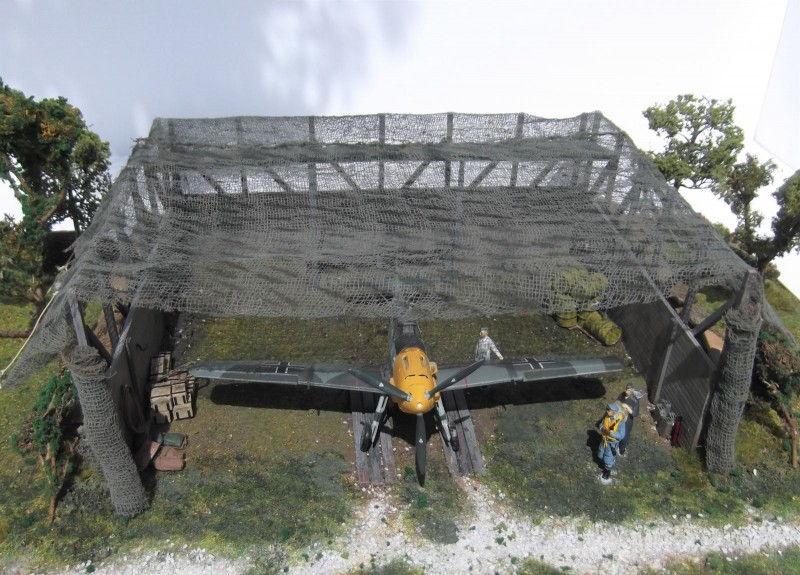
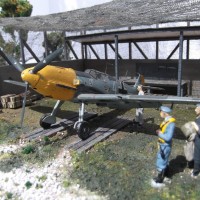

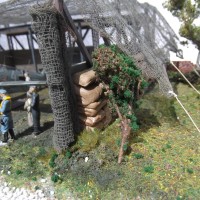
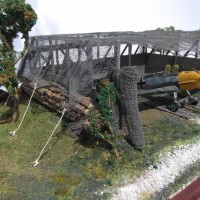


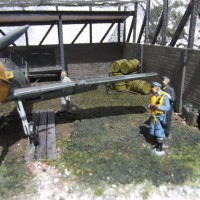
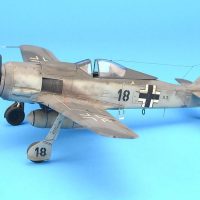
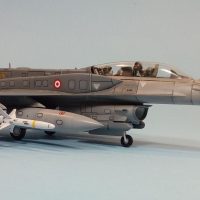
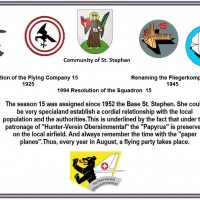
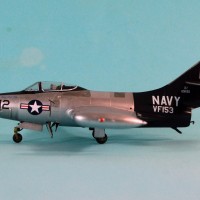
Very nice project. Can't see a lot of detail of the main subject, but it looks like you did a great job on the 109 as well.
Inspiring work, sir!
Fantastic depiction, Paul...it's obvious you put a lot of thought (and work) into this. Great job!
Excellent, Paul. As always. Very interesting diorama. Well done, my friend!
Thanks for the comments guys. Difficult to highlight the main structure - it's meant to be camouflaged!The main structure follows some pics of a similar pen in John Vasco's fantastic "Bombsights over England" book but if anyone wants further info on how it's made just ask. Trouble is, when you start something like this it's difficult ti decide when enough's enough.
Paul
If this is your first attempt I can't wait to see others in the future...well done
I echo George's response... Excellent work Sir !
AWESOME WORK!
Hello Paul,
Well done. Full of detail.
Regards, Dirk / The Netherlands.
You have done a superb job of recreating an historical moment. Perusing Pinterest provides an astonishing array of the artistry, skill and effort others put into dioramas. It's almost enough to make one give up before they begin. For me, its like looking at my paint-by-numbers next to a Raphael.
Since the moment a Fokker D-VII fell off its base, everything has been pinned.
Coming from someone who has endlessly more patience and skill than me (I just saw your crop dusting dio and gasped - it's amazing). Your eye for detail is amazing!
Paul